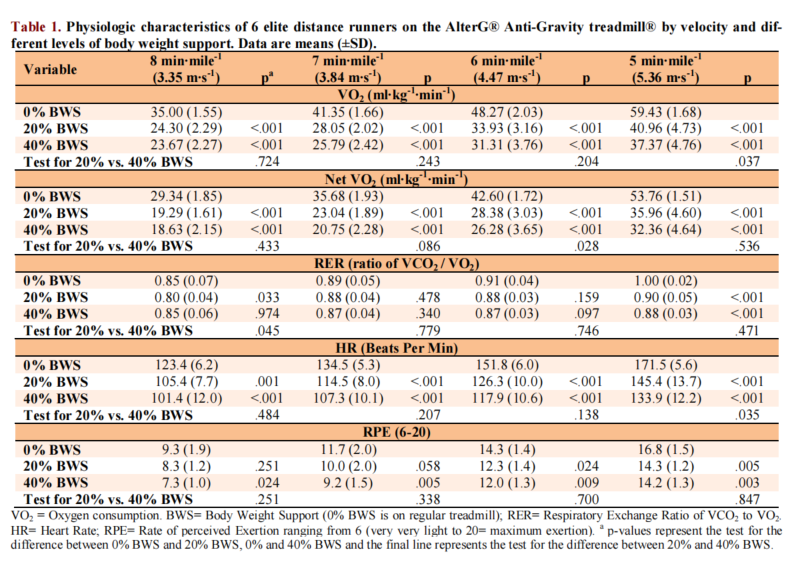In recent years, the use of treadmills that provide partial body weight support have become increasingly commonplace among elite athletes as a supplemental training and rehabilitation tool. Several technologies for achieving body weight support on a treadmill exist, including harness systems, underwater treadmills, and the most recent development, the application of Lower Body Positive Pressure. These Lower Body Positive Pressure treadmill, also called the “Antigravity treadmill”, uses positive air pressure applied within a sealed chamber surrounding the subject’s pelvis and legs to support the user’s body weight.
Article cited in:Journal of Sports Science and Medicine (2015) 14, 333-339
Article link:https://pubmed.ncbi.nlm.nih.gov/25983582/
The purpose of the present study was to add data on elite runners to the growing body of literature on Lower Body Positive Pressure treadmills (Anti-Gravity Treadmill). Specifically, the goal was to determine the relationship between velocity and metabolic cost while running on an Lower Body Positive Pressure treadmill (Anti-Gravity Treadmill), and to examine how the application of body weight support affected this relationship. Additionally, due to the highly trained and elite nature of the runners recruited and their ability to comfortably run at relatively fast velocities sub-maximally, we were better able to evaluate the relationship between unloading and metabolic cost at velocities previously unattainable by research subjects without generating significant proportions of energy from non-oxidative pathways. Consistent with the existing Lower Body Positive Pressure literature, it was hypothesized that 1) as body weight support support increased, the metabolic cost associated with running would decrease; 2) this decrease in metabolic cost would be proportionately less than the percentage of body weight support provided at greater levels of body weight support(i.e. 40% support would lead to less than 40% reduction in VO2); and3)the slope of the relationship between body weight support and oxygen consumption across velocity would be less steep with greater body weight support(indicating that increasing velocity is relatively easier when running with more body weight support).

This is the first study to compare the metabolic cost of running on an Lower Body Positive Pressure treadmill (Anti-Gravity Treadmill) to running on a regular treadmill among elite level distance runners. The results were consistent with prior research, which found that while running on a Lower Body Positive Pressure treadmill (Anti-Gravity Treadmill), 1) metabolic cost significantly decreases with increasing levels of body weight support, 2) metabolic cost significantly increases with increasing velocity, and 3) there is attenuation in the decrease in metabolic cost as body weight support increases. It was also found that there were significant differences in the slopes of the relationship of metabolic cost versus velocity at different levels of BWS, and that the slopes increased as body weight support decreased, indicating that body weight support reduced VO2 more as velocity increased at higher levels of body weight support. Finally, variability in the relationship between velocity and metabolic cost increased as the amount of body weight support increased.